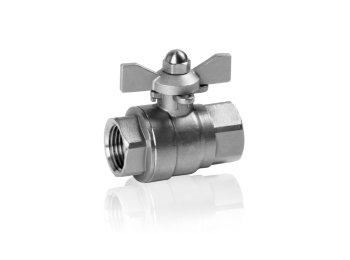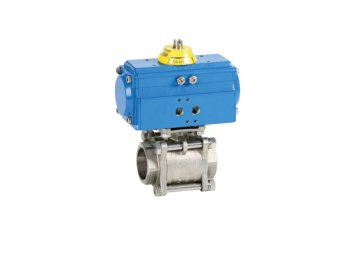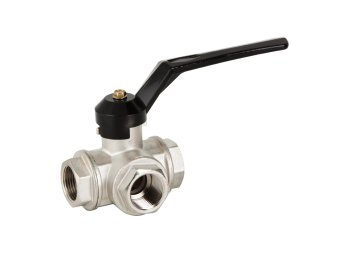Industrial hydraulic shut-off valves: performance and safety.
In every industrial plant — whether water treatment, food production, chemical, HVAC or fluid distribution — shut-off valves play a crucial role:
- controlling pressure, flow rate, level and temperature;
- isolating and securing the flow of liquids or gases.
It is thanks to these devices that maintenance, safety and operational continuity can be ensured. When talking about fluid shut-off, it is important to highlight that valves in some cases are used to block or allow the total passage of the fluid, while in others to regulate the flow. Consequently, within the category of shut-off valves we find different types, some ideal for acting as on/off valves, others as control valves.
Before considering the various types of shut-off valves, an interesting historical curiosity. From the analysis of findings, it emerged that valves built by the ancient Romans were already equipped with a particular construction feature allowing the reduction of maximum flow rate case by case, based on the instructions of the water superintendent. But let’s now see how shut-off valves work.

Ball valves: the most widespread shut-off valves.
Ball valves are devices found in many industrial systems because they ensure quick and highly effective shut-off: from petrochemical plants to cooling systems, from food production lines to desalination plants, just to name a few examples. Ideal for services requiring perfect sealing, they operate through a perforated ball that rotates 90°, allowing the opening, closing or interruption of fluid passage. They are appreciated because they withstand very high pressures and extreme temperatures, come in various sizes and are easy to operate and repair. (see also Globe 3P by Genebre: the easy-maintenance ball shut-off valve)
Ball valves also exist in the three-way valve version, designed to divert or combine fluids within a system. For example, in systems that handle different types of liquids, these valves allow mixing, regulating quantities or directing them toward various pipes according to operational needs. As the name suggests, the valve connects three openings and controls the flow based on the position of the internal ball, which acts as the shut-off element. The ball can be configured in two main ways:
- T configuration: ideal for fluid mixing or for creating a bypass. It allows flow toward two outlets simultaneously or to the left or right outlet, or complete shut-off.
- L configuration: used to divert the flow from one pipe to another. In this mode, the valve can direct the fluid to the right outlet, the left outlet, or shut completely.
Butterfly valves: compact and versatile solutions.
These valves feature a metal disc acting as a closing element. The disc rotates around a central shaft and, by compressing the gasket inside the valve body, allows opening, closing or partial regulation of fluid flow. The evolution and specific construction improvements have made this type of shut-off valve suitable even for demanding applications. Today, butterfly valves are widely used in industrial environments, especially in plants where fluids are dense or contain suspended particles, situations in which ball valves are not suitable.
For example, in a wastewater treatment plant, butterfly valves are often installed on the main pipes transporting sewage and sludge. These fluids are dense, may contain suspended solids and require valves capable of ensuring good sealing and ease of operation without risking clogging. The butterfly valve allows:
- regulating sludge flow from the sedimentation tank to subsequent treatment stages;
- rapidly isolating a section of the plant during maintenance operations thanks to the disc’s quick closure.
Butterfly valves are available in wafer or lug versions. The difference concerns the way they connect to pipes. In the first case, ideal for tight spaces such as a food production line, the valve is bolted to the pipe flanges; in the second case, more suitable for installations requiring frequent maintenance or end-of-line applications, the valve features threaded lugs on both sides.
The importance of materials and compliance with regulatory standards.
In the industrial sector, the choice of materials is crucial to ensure resistance, durability and compatibility with applications and process standards. Stainless steel is a particularly strategic material for this type of application, both for its corrosion resistance — ideal for aggressive liquids — and for its hygienic properties, which make it the reference material in the food or pharmaceutical industry.
The gasket material is also essential. For example, a gasket made of EPDM rubber with a Teflon coating ensures superior resistance and durability, even in demanding contexts.
Efficiency and automation: actuated shut-off valves.
Modern shut-off valves can be equipped with electric or pneumatic actuators. This evolution into actuated valves transforms shut-off valves from simple mechanical components into intelligent process-control devices.
Pneumatic actuation is one of the most widely used systems for automatically controlling shut-off valves due to its speed, reliability and operational safety. In this type of actuation, compressed air is used to generate the movement needed to open or close the valve: pneumatic energy pushes a piston or diaphragm connected to the closing element, allowing precise and repeated maneuvers even at high frequencies.
This system is particularly advantageous in industrial environments requiring reliable and fast control, or in potentially explosive contexts where electrical components are best avoided. For example, in emergency shutdown systems, a pneumatic actuator can close a ball valve in seconds to prevent the spread of hazardous materials. Moreover, thanks to their robustness and fewer components compared to electric actuators, pneumatic actuators ensure long service life and reduced maintenance. They are also practical, since compressed air is already present in many industrial environments, and they allow integration with advanced automation systems such as PLCs and remote-control devices.
























